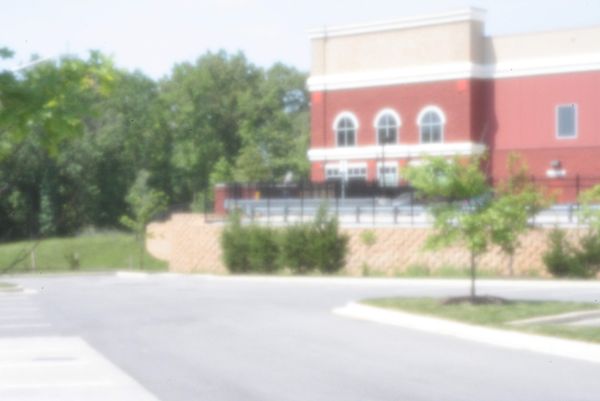As promised on thr pinhole thread
Jan 16, 2019 15:53:42 #
Jan 16, 2019 15:54:49 #
Jan 16, 2019 15:55:38 #
Jan 16, 2019 15:58:24 #
Timmers wrote:
Hi, love that there is a pinhole guy on the Hog!
Nice images there, typical Hog style images.
I'm going to PM you.
By the way the 8X10 holder you show, one of the worst holder makers in the world!
Nice images there, typical Hog style images.
I'm going to PM you.
By the way the 8X10 holder you show, one of the worst holder makers in the world!
Thank you very much Tim
That holder was the only one available at the time in this area. It did work well for my limited use.
Jan 16, 2019 16:01:46 #
Gotta respect a man who keeps his promises.
Thanks for sharing the pictures of the camera and the link to the pictures. Nice work!
--
Thanks for sharing the pictures of the camera and the link to the pictures. Nice work!
--
Jan 16, 2019 16:10:41 #
Bill_de wrote:
Gotta respect a man who keeps his promises.
Thanks for sharing the pictures of the camera and the link to the pictures. Nice work!
--
Thanks for sharing the pictures of the camera and the link to the pictures. Nice work!
--
Thank you very much Bill de
Jan 17, 2019 05:38:06 #
Gee, a cable release and everything. Really nice!
That's way more advanced than the Harman Titan 8 x 10"
(which also seems to be out of production, though the
4 x 5" size is still available).
That's way more advanced than the Harman Titan 8 x 10"
(which also seems to be out of production, though the
4 x 5" size is still available).
Jan 17, 2019 06:09:39 #
Bipod wrote:
Gee, a cable release and everything. Really nice!
That's way more advanced than the Harman Titan 8 x 10"
(which also seems to be out of production, though the
4 x 5" size is still available).
That's way more advanced than the Harman Titan 8 x 10"
(which also seems to be out of production, though the
4 x 5" size is still available).
Cable release? nope, no cable release, just an old Kodak shutter assy. with the lens removed.
Jan 17, 2019 06:15:50 #
Jan 17, 2019 06:17:43 #
Manglesphoto wrote:
Cable release? nope, no cable release, just an old Kodak shutter assy. with the lens removed.
That's too bad. Some of those old Kodak shutters did accept a cable release.
Jan 19, 2019 15:39:29 #
Manglesphoto wrote:
Here are some images of my Pinhole camera from 198... (show quote)
Since there is some interest in pinhole imaging, some suggestions. Lens caps with precision pinholes available on eBay for about ten dollars. The book Pinhole Photography by Eric Renner is a must read if you want to get deep into this. Excellent book on light in art.
Bill
Jan 19, 2019 17:46:00 #
Timmers
Loc: San Antonio Texas.
newtoyou wrote:
Since there is some interest in pinhole imaging, some suggestions. Lens caps with precision pinholes available on eBay for about ten dollars. The book Pinhole Photography by Eric Renner is a must read if you want to get deep into this. Excellent book on light in art.
Bill
Bill
Eric Renner and his artist wife own and operate The Pinhole Resource. Eric authored the book, Pinhole Photography, get the second edition, it has some new additional insights into the world of pinhole images. Eric is an extremely gifted person, warm and friendly, he takes pinhole quite seriously. Eric is scholarly, yet not stuffy.
Eric and photographers like him are the reason for the evolving schism between the art elitist who now want to bring photography into the fold of Modern Art. It is a joke they manner in which photography is 'handled' by the elitist arts snobs. To photograph it boils down to photography does not need The Arts, That Art needs photography.
In Eric's case is another case in point. David Hockney (the painter) put forth a 'thing' about painters in the Renaissance use of pinholes as an aide to producing the then new optical perspective in their paintings. Then, art historians and art critics jumped on this and all of a sudden we had a whole new understanding of perspective based imagery. Wow! Shades of genus and originality!
Photography workers had put this concept forward decades before Hockney and the art elitists. More over, many of the critical ideas, objects and concepts of how and why the pinhole and optical devices were responsible for transforming the art worlds basic structures. Eric Renner's book would help move loads of different understandings of subjects like architecture, astronomical alignments and many others fascinating concepts. To think his book is merely limited to pinhole is to sell it intellectual short of much disserving attention.
A perfect example of the myopic self serving idiocy by the established arts community would be to embrace the idiotic life of the Abstract painter Jackson Pollock. He is referred to as 'Jack the Dripper' and is portrayed as a bulling, raving, anti social, alcoholic.
What Pollock was a driven obsessed visionary with a rare gift. Pollock's mind perceived the world as that of a computer, like a Mandelbrot series for information. Pollock 'saw' the world as data and then transformed that 'reality' into painted graphics. This understand of his work is confirmed by the digital in putting of many of his paintings with detailed mathematical analysis done by computer technologists. Pollock actually 'saw' reality much like a computer processes data and then converts the computers data back into a graphic representation.
This helps us to understand that Pollock cleared the distractions of human existence, dulled his emotions with the drug alcohol, all so he could enter into a world he could 'see' and could represent as marks on a canvas with cheap house paint. He saw as a computer program, gave proof of what can happen when the human mind 'sees' with a totally foreign vision.
Why is this critical? Artists are visionary travelers, that is not just some empty pronouncement. I live and embrace that world of visionary belief system. I often chuckle at the absurd pronouncements I run across on the Hog, but I also delight when I read original visionary statements from what many feel are empty muddle, they need to be told what a wonderful addition they make to the human condition as well as the human race!
Jan 19, 2019 23:01:21 #
Timmers wrote:
Eric Renner and his artist wife own and operate Th... (show quote)
I don't understand: what's wrong with Eric Renner's book, Pinhole Photography?
I read the Second Edition. It gives a detailed account of the history of pinhole photography,
with a lot of examples. Then it discusses pinhole techniques, and makes some practical suggestions.
It's well-written and seems to be well-researched.
The only thing I found missing was an explanation of why there are so many diffrent recommendations
for optimal pinhole size (for a given pinhole-to-film distance and wavelength of light): for example,
that reommended by George Airy vs. that recommended by Lord Rayleigh. A post on Photography
StackExchange lists five modern sources with five different sizes--the largest 3
https://photo.stackexchange.com/questions/46489/how-to-calculate-the-optimal-pinhole-size
(BTW, I may have a solution to this problem.)
Jan 20, 2019 01:05:26 #
Timmers
Loc: San Antonio Texas.
Bipod wrote:
I don't understand: what's wrong with Eric Renner'... (show quote)
It is probably my dyslexia in writing, there is NOTHING wrong with Eric's book, the first Edition was later up dated by Eric for his research into the evolution of pinhole and astronomical locating of buildings in Florence and The Vatican. That research prompted the second edition being published, or so Eric explained in a conversation here in San Antonio when he was a visiting artist when Rick Collier was director (it was when the institution was known by it's original name The Southwest Craft Center).
Technically the vary finest pinholes were made by NASA using lasers for pinholes during Sky Lab. The best were kept by NASA and the rest sold to the public in sealed plastic envelopes with the diameter affixed to the particular bagged pinhole. Should you have access to a laser you will get some damn fine holes in metal.
The differences in sizing has to do with optimizing the relationship of distance from the recording surface AND the size of that recording area. A sheet of 4X5 film needs a smaller pinhole, general than an 8X10 size film. Sizing for some of the anal persuasion has certain optimal limits. Truth be known, many workers are more concerned to produce images that are more 'wide angle' look, than a 'normal' focal length.
There are a butt load of issues that the pinhole crowd have as issues. The number one issue or concern is the construction of all the parts of a pinhole camera, the pinhole is just one of the parts of the adventure. You remember reading about the Italian (if memory of my reading serves me, and I may have his identity wrong) who cleans out the core of fallen trees in his home shop, then converting the tree to a pinhole camera, returns the tree to its felled location and makes exposures lasting weeks even months of the location! Eric and the Pinhole Resource are the absolute center for the pinhole experience.
I got so tickled from his reaction to the SMD (Saturday Morning Discovery) photo program. The kids at the time he was there had two obsessions, photographing their shoes and dead cockroaches! Self portrait and general portraits were not that high on their list. Running in and out of the light trapped darkroom was the height of the experience for the kiddos and their parents. It was standing in front of the developer tray watching the photo develop, seeing it in revers!
One memory I shall never forget was a tiny 6 year old girl being picked up from the darkroom by her father, who was rather taken by looking at her negatives washing in the final bath tank. Dad wanted her to explain what she had been doing, what was the way these were made, the explanation. From her mouth came that statement that gets us all, the hook that drives everyone on this place the Hog, she took him by the hand and starter pulling him towards the door while tell him, "Daddy, its magic!"
Jan 20, 2019 01:10:37 #
If you want to reply, then register here. Registration is free and your account is created instantly, so you can post right away.




